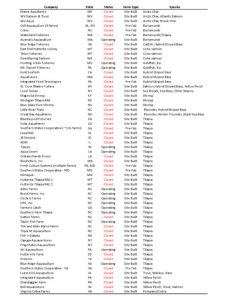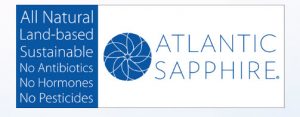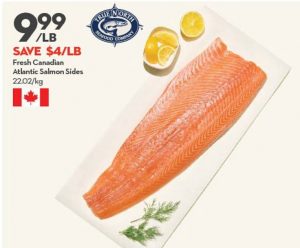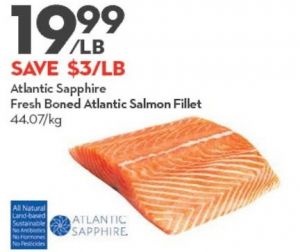What a pain: The Ferret describes itself as an independent media co-operative that offers an Investigative Journalism Platform. One of its founders has regularly relied on anti-salmon farm activists for stories relating to alleged impacts of salmon farming on the environment, so the recent offering comes as no surprise. The Ferret story focused on a short video edited from 20 minutes of illicit filming about some sea lice infested fish on a farm in the Outer Hebrides.
The content of the Ferret story has been discussed by others, so we do not intend to repeat that here. Instead, we were interested by comments made by the person responsible for recording the video. We have discussed Corin Smith’s activities in previous issues of reLAKSation but we mention him here because we were rather surprised by how he described himself to the Ferret.
He said that: ‘I am forty years old born and raised on a working hill sheep farm. I am still an active member of the agricultural community. I am not squeamish or hysterical about the rearing of animals for food, but I have never in my life witnessed such extensive animal suffering and over such a long period’.
We, at Callander McDowell, do not condone any farming company that allows their fish to get into the state seen in the video but at the same time, we would suggest that the video is not representative of the Scottish salmon industry and that Mr Smith’s language is questionable. He claims to have never see such extensive animal suffering over such a long period. He flew a drone over the site on the 22nd of August and paddled out to the cages on the 27th. That’s just five days. He told the Ferret that the fish he saw must have developed over a matter of weeks but that is purely conjecture.
Mr Smith implies that despite his agricultural background, he has never seen such extensive animal suffering. Maybe he is seeing only what he wants to see. As a sheep farmer, we would have thought that Mr Smith would have been appalled by the extensive suffering of hill sheep earlier this year as flocks were decimated by dreadful weather. According to the Scotsman, Scotland’s sheep farms were being turned into graveyards as sheep suffered from starvation and the cold. The newspaper reported that thousands of sheep perished over five weeks in February and March with many suffocated as they tried to obtain shelter from driving snow or they froze to death. One of the people charged with removing carcasses said that he usually would collect five or six lambs a year from a farm, but he collected 50 or 60 at a time with the figure rising to over 200 on some farms. Clearly, a lot of sheep have suffered an unpleasant death this year.
However, it is not just natural (or unnatural) conditions that have brutalised sheep this year. The Independent newspaper reports that the RSPCA is considering prosecuting gangs of sheep shearers after an investigation revealed horrific cruelty and abuse. Sheep have been observed writhing in agony as they were violently hit, punched and stamped on and had their limbs twisted. PETA told the Independent that they had visited 25 shearing sheds this year and have seen illegal activity in every one.
Shearers were seen to stand on sheep’s heads and necks, pinning them down to stop them moving. They threw animals on and off the backs of trucks, twisted their necks and limbs and hit their heads and bodied on hard floors. In other cases, workers kicked the animals in their belly, violently punched them in the face and jabbed them in the head with heavy metal clippers. After being roughly sheared, some animals had open wounds that were bleeding. The workers then used needles to sew them up without any anaesthetic.
The accounts of cruelty against sheep have also been reported on BBC Radio’s Farming Today programme.
What we find surprising is that these abuses occur in an industry which Mr Smith says he is part of and yet he claims that some fish, which have been naturally infected with sea lice, represent the worst animal suffering that he has ever seen.
According to the Ferret, Corin Smith has been backed by the Scottish animal welfare charity OneKind, which is currently campaigning for a moratorium on the expansion of the salmon farming industry until welfare concerns are addressed.
In our opinion, Corin Smith and OneKind make extremely strange bedfellows.
On their website, OneKind explain why they are seeking a moratorium on the expansion of the salmon farming industry. They say that expansion can only happen once the salmon farming industry has passed three tests. These are:
- Farmed salmon have good lives that are worth living.
- The industry does not cause suffering to wild animals such as wild salmon and trout.
- The industry can be shown to do no harm to the environment.
We are not sure how it is possible to measure whether salmon have a good life that is worth living. These are human emotions that are being applied to animals whose genetic makeup is programmed with the aim of creating the next generation.
The idea of a moratorium of salmon industry expansion until it shows it does no harm to the environment is very much of interest. Maybe OneKind should be calling for a similar moratorium on human expansion because it is clear that humans have done, and continue to do, massive harm to the environment. Surely, it is humankind that is the real issue here not salmon farming.
However, it is the third test that is the one that has caught our attention in relation to OneKind’s backing of Mr Smith. We don’t really think that they have really thought their campaign through. This is not surprising as whilst OneKind have been in existence in one form or another for many years, they admit themselves that it is only this year that they started to campaign about salmon farming. Before then, salmon farming seems to have passed them by despite being Scotland’s most important food industry. We suspect that OneKind only became interested in salmon farming after being alerted to issues by their now partners, including various ‘NIMBY’ groups such as Scottish Salmon Think Tank and Scottish Aquaculture Reform Network Scotland who have been looking for a louder voice to act on their behalf. From a knowledge base of nothing, OneKind have been influenced by selected images and videos provided by their new partners. Their new-found interest in aquaculture prompted the recruitment of a new aquaculture project officer, straight out of university.
One of the first actions of OneKind’s new campaign against salmon farming was to fund an investigation by the Ferret in return for which the Ferret received full editorial control. The money to pay the Ferret came from the Brussels based Eurogroup For Animals and as part of the Ferret’s investigation, they commissioned Richard Baynes to produce a podcast which explored the issues with the industry, scientists and fish farm opponents. The podcast can be found at http://tapewrite.com/tapes/play/5b6887a759fa4121fd43b874/
The most interesting section of the podcast begins after 10 minutes and is an interview with Professor Victoria Braithwaite, formerly of both the universities of Glasgow and Edinburgh, Professor Braithwaite is one of the pioneers in the investigation of whether fish feel pain. She told Richard Baynes that ‘In the way that we care about the welfare of our pets like dogs and cats and also terrestrial farm animals, a lot of effort goes into trying to minimise the suffering of those animals because we believe that they are sentient and therefore have this capacity for suffering and so what we’re saying is that fish should be included in that’.
We, at Callander McDowell, have been aware of Victoria Braithwaite’s work since 2010 when she published her book ‘Do Fish Feel Pain’.
In the book she writes: ‘Of the many people with whom I have discussed the fish pain debate, the anglers are the most wary. They are concerned that catching fish using a hook may be perceived as cruel. It seems to me that many anglers have wanted the fish pain debate to go away: they don’t want to know whether fish feel pain because finding out that they do may require them to justify their sport. Some of their concern is warranted because animal rights groups are turning their attention to fish and are beginning to campaign against angling’.
However, it seems that rather than turning their attention to questions about the welfare of wild fish hunted for sport, OneKInd have aligned themselves with anglers against the salmon farming industry. Perhaps, their recent attempts to board the fish bandwagon means that they haven’t realised that most of the campaigners against salmon farming are anglers. Corin Smith might try to promote himself as being part of the agricultural sector but the reality is that his main business is as an angling guide.
A couple of years ago, Mark Lloyd of the Angling Trust told the Daily Telegraph that ‘the debate about fish feeling pain has always been a red herring, so to speak’. He added ‘that modern fishing tackle and techniques mean that fish that are released have an excellent survival rate’.
Of course, Mr Lloyd would say that, since he does represent the interests of anglers. NASCO have said that the success of catch and release is highly variable with mortality ranging from 0% to 80%. We believe that a mortality rate of about 15% is more realistic, but it does depend on the individual angler and his or her actions. The reasons for delayed mortality have been detailed by Dr Steven Cooke of Carlton University in Ottawa in a paper published in the Transactions of the American Fisheries Society. These include injury or the inability to regain physiological homeostasis. Dr Cooke says that the route to mortality begins with the burst swimming the fish experience when fighting against the angler. This is fuelled by anaerobic metabolism of glycogen resulting in the accumulation of metabolites in muscle tissue. He says that exposure to air during removal of the hook and subsequent photographic recording can also be extremely stressful.
Mark Lloyd might suggest that released salmon have an excellent survival due to modern fishing techniques, but it is not clear how many anglers adopt such techniques. A measure of compliance can be judged by looking at the many photos of anglers displaying their catch that are posted online. The various angling groups have produced a leaflet about good practice for catch and release including recommendations about photographing the fish. Many of the posted photos clearly suggest that good practice is not being followed. The photos of most surprise are those where the angler lays the fish down alongside his rod and reel. We are not quite sure of the point of this, but such posed fish have appeared in photos for many decades. Such a photo has been recently posted by the Spey Fishery Board (https://www.speyfisheryboard.com/week-commencing-10th-september-2/) It is of a fish caught from the Delfur Fishery. This is the fishery run by Sir Edward Mountain’s family. Sir Edward is convenor of the Scottish Parliament’s REC Committee whose forthcoming report is expected to be critical of fish welfare on salmon farms. Perhaps, if the REC Committee is concerned about fish welfare, they should include the welfare of wild fish too. The question is if anglers are not following good practice in relation to photography, what other practices are being ignored?
Meanwhile, OneKind hope to bring about minimal impact of salmon farming on wild fish. Perhaps, the question they should be asking is how much impact angling has on wild fish. After all, if the aspiration is for salmon farms to meet the highest welfare standards, surely, it should apply to the wild fish sector too. According to Victoria Braithwaite, wild fish feel pain too.
Sealed: The Guardian newspaper’s environmental columnist has written that the Royal Society for the Protection of Animals (RSPCA) has rescued one seal but condones the killing of many others. According to George Monbiot, the RSPCA issued a press release last week about the incredible story of Marina, a seal that had become trapped under a three- tonne boulder on a beach in South Wales. After release, the seal received six months rehabilitation after which the RSPCA said that Marina’s rescue was testimony to the organisation’s commitment to wild animals and their welfare.
On the same day, the RSPCA’s head of campaigns issued a statement that ‘Seal shooting is not culling, it’s about humane pest control’. George Monbiot says the RSPCA were defending the slaughter of seals by Scottish salmon farms. On Twitter, he used the words mass slaughter.
The source for George’s Monbiot’s ire is of course Don Staniford. Don has been actively Tweeting about seal deaths. He says that between 2011 and 2018, more than 850 deals were shot by salmon farms. He tends to aggregate such figures to produce high numbers instead of focusing on the latest figures or the overall trend.
2011 241
2012 212
2013 119
2014 92
2015 73
2016 65
2017 49
Surely, the story is not that the industry has killed 851 seals over seven years but that the number has reduced significantly over that time-period as farmers strive to find other ways to minimise the impact of seal predation. Of course, Don isn’t really bothered about seals at all. It is just another excuse to be critical of salmon farming. If he cared about seals, he would mention that in the past, wild fish interests killed many more seals than all the salmon farms together. Even now when the wild sector is showing restraint, many anglers are demanding the return of the seal cull (as well as of fish-eating birds (FEBs)
Whilst Don Staniford aims to keep the seal shooting story in the news, the reality is that no-one in the salmon farming industry wants to see any seals killed at all. Sometimes there is no choice. Most people working on salmon farms do so because they love the environment in which they work. George Monbiot loves the environment too. However, he also argues that farming any livestock for food threatens all wildlife on earth so his views on seal shooting is not unexpected. He previously has written that the ongoing badger cull is a senseless waste of life. By coincidence, the UK Government has just sanctioned the killing of 40,000 more badgers and yet there doesn’t seem much opposition. As we suggested, the vocal protests against seal killing is not about the seals but rather attempts to discredit the salmon farming industry. Unfortunately, those who oppose the development of salmon farming aren’t interested in figures that show seal kills have dramatically declined.
Another person against the killing of seals by salmon farmers is Mark Ruskell MSP. Earlier this year, he told the BBC that the Scottish Government must change the law to ban the intentional killing of seals as a way of protecting salmon farms. This week, Mr Ruskell lodged a motion in Scottish Parliament asking members to accept that fish are sentient with the capacity to suffer as illustrated by video evidence from the farm in Loch Roag.
In his motion, he quotes the report from OneKind and calls for the Scottish Government to support a moratorium on expansion of the salmon farming industry. As far as we are aware, Mr Ruskell has something in common with OneKind in that to the best of our knowledge, neither have visited a salmon farm to see the industry for themselves. We have written to both to ask to confirm whether they have been to a salmon farm and neither has responded. This is something else Mr Ruskell and OneKind have in common. They do not respond to email correspondence, but then neither do most of those who are critical of the salmon industry. They seemingly don’t want to hear the other side of the story in case it doesn’t fit in with their own.
Closed minds: Most critics of the salmon farming industry argue that a solution exists in the form of closed containment. They dismiss concerns from the industry that technology is yet unproven and more importantly not commercially viable. We were therefore interested to see an article by Josh Goldman of Australis Barramundi in the United States about closed containment. He has been rearing barramundi in recirculating systems for nearly thirty years so is well qualified to express an opinion.
Mr Goldman has produced a list of every RAS closed unit developed in the US over the last twenty years and their current status. The important feature is that a red coloured entry indicates a failed venture. These cover a range of different species, some of which might be more tolerant of the RAS production methods.

Seemingly, despite the best intentions, knowledge and commitment of the staff and major financial commitment of owners and investors, very few of these ventures have been a success. This is for many different reasons. The simplest answer is that RAS closed containment is not as simple as those who advocate its use make out.
By coincidence, we saw a store flyer this week issued by Longo supermarkets in Canada. They were promoting salmon from two different sources. One was Canadian salmon from True North with a salmon side selling at C$9.99/lb, a saving of C$4/lb (C$22.02/kg). The other was from Atlantic Sapphire at C$19.99/lb, a saving of C$3/lb (C$47.07/kg) The flyer doesn’t state the origin of this salmon, but we presume that it comes from their Danish plant.



The big question is given a choice, between pen raised or closed contained salmon, which will consumers buy? Are they really prepared to pay 113% more for salmon produced in closed containment? We will have to wait to see.
We happened to notice that Longo’s home delivery service is offering salmon from the Canadian Kuterra, a farm we have previously discussed many times. This week, their salmon is also on promotion with a saving of C$3.30 down to C$22.04 for a piece of fish weighing between 450 and 500g. This equates to C$44.08/kg down from C$50.68/kg. For comparison 4 salmon fillets from True North in Canada weighing 560g costs C$26.99 equating to C$48.19/kg. It doesn’t seem that Kuttera are in receipt of the premium that is being achieved by Atlantic Sapphire. We suspect that the economics of Kuterra salmon may still not reflect the true cost of producing the fish.
Snorkel story: One of the activities undertaken by Marine Scotland Science as part of their £600,000 SARF project (about which we have yet to comment) was to conduct a snorkelling survey of the Loy Burn, part of the River Lochy. The survey identified redds and possible holding pools. All the pools were investigated for the presence of salmon.
The fact that Marine Scotland Science view snorkelling surveys as part of their scientific method makes an article in the Canadian Sea West News of more interest. It is the account of a dairy farmer who spends all his free time (over 400 hours a year) snorkelling 16 to 30 streams along the east coast of Vancouver Island. It is his hobby and he says he has no agenda.
Chris Walling describes how he observes the substrate quality, silt, invasive species, effects of residential development, run offer and freshwater survivability. He also photo-documents wild salmon. He says that during his time in the water, he has observed fantastic numbers of spawning salmon and chronicled record numbers of Pink, Chinook and Chum salmon.
Chris says that he is obviously aware of the local campaigns against salmon farming so he has tried to find out as much as he can about salmon farming and the impacts on wild fish. He says that he quickly discovered that there is a tremendous amount of misinformation in circulation that made gathering facts really difficult. He said that he is most aware of groups of professional activists discrediting the science of Canada’s veterinarians. Consequently, he said that in order to make an educated judgement, he needed to gather his own facts.
Through his fact gathering and observations, Chris became aware that many of the streams he visited were struggling. He said that they all had one thing in common, past habitat destruction. This includes, logging, mining and residential development. He says that habitat is easy to destroy but takes many years to heal. He has seen salmon thrive or perish depending on the habitat conditions.
Of most interest, Chris says that after making many observations he contacted the professional activist groups as he was under the impression that they were trying to save wild salmon. He was told that his information was counterproductive to their agenda.
We, at Callander McDowell can empathise with Chris Walling. Despite claims to the contrary, we are not funded by the industry. We have pursued our own research based on our own observations and most tellingly of all, the salmon industry critics won’t talk to us – probably because what we have seen also doesn’t support their agenda.
His conclusion is that salmon farms are having no noticeable impact on wild Pacific salmon. He says that the real problems for Canadian Pacific salmon that he can see lie in the freshwater environment.
https://www.seawestnews.com/salmon-farms-a-river-snorkelers-observations/


